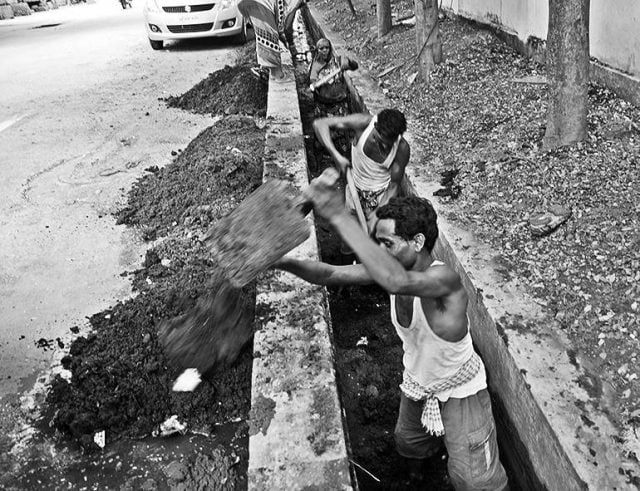Manual scavenging on the first-time read might seem like an ancient practice, one that our ancestors used to do, the phrase sounds like such.
But while it may be old, it is definitely not extinct and still exists in India to this day.
In short, manual scavenging is pretty self-explanatory in itself, which means the practice of cleaning out, disposing of, handling or even carrying out animal and human excrement from sewers, streets and latrines.
However, this practice was prohibited in 1993 by the govt. of India and employment of manual scavengers to clean out ‘dry toilets’ was made illegal. In 2013 areas like unsanitary latrines, pits and even ditches were included in this law.
But what exactly do we know about this age-old profession in which till date about 180,000 people are employed?

What Is The History Behind Manual Scavenging?
Manual scavenging is not like other professions that have managed to break through the caste system if even a little. Instead, it is still firmly set in that area only which was created about 3,000 years back.
Yes, 3,000 years have passed since manual scavenging was introduced and it is deeply unfortunate that we still have that practice in existence.
As per the caste system, in the beginning, there were 4 varnas, these varnas created the castes of Brahmin, who would educate and were the intellectuals, then came the Kshatriya, who were the warriors and the protectors, then came the Vaisya, the merchants and the administrators, who would oversee the workings of the society. Lastly came the Shudra, who would be the peasants or farmers.
These varnas then comprised of hundreds and thousands of sub-groups that each had their own specific occupation imposed on them. However the one last one, below all these varnas, were those considered to be the ‘untouchables’, they are separate from the varnas or the castes and instead are the ‘outcastes’.
The reason why this sector was segregated was because they handled the dirty waste and more.
These people were also known as ‘bhangi’ which is a Sanskrit word for ‘broken’ and in Hindi means ‘trash’.
Later on, terms like Dalit and Scheduled Castes were added to this sector and they became a face of exactly how abhorrent and cruel the caste system of India was.
Read More: A War Museum In Manipur To Remind You Of A Forgotten History
Why Is Manual Scavenging Such A Big Deal?
To be honest, in a way, not saying the segregation was ever a good thing, however, during the olden times, especially 3,000 years back, when we did not have the modern facilities of today, then it made sense to a certain extent.
This was a time when even a cold could result in death, life mortality was high and death was always round the corner. Pair that with the fact that sanitation was nil, there were no separate bathrooms, no sewer system, no systematic collection of waste and it just increased chances for disease.
Personal hygiene was also a luxury instead of something done daily and that too not to the best effect.
That is why, in a way, if you see, segregating the people who would take out the waste was not entirely illogical, as it prevented the spread of disease and bacteria.
However, when one comes to the modern times, with the slow but gradual inclusion of modern sanitation methods and more, this segregation does not make any bit of sense anymore.
Bear in mind that according to me, the caste system was fine about 2,000 years ago, but as we moved forward in time, and our society changed, this system should have seen some major changes.
The first being the inclusion of the Shudra or Dalit caste into being a part of the society and no longer considered as untouchables.
Who Is Still Doing Manual Scavenging?
It is extremely unfortunate to see that manual scavenging is still being practiced in our country. Such a dangerous and dehumanizing practice even after being made illegal is still active in India.
As per statistics collected from the Census of India 2011, there are about 182,505 manual scavengers that still exist in India, mainly in rural areas. States like Uttar Pradesh, Bihar, Madhya Pradesh and more are ranked the highest having manual scavengers.
In today’s time according to certain reports a high percentage, almost about 95% of these manual scavengers are Dalit women.
One must also realize that just the govt. abolishing the practice does not automatically clear away the deep-set prejudice and stigma that comes from being in the profession and caste that the Indian society still levies heavily on them.
So even if they wanted to escape this profession, other places would not take them.
Image Credits: Google Images
Other Recommendations:
http://edtimes.in/2017/07/the-very-intriguing-and-unknown-journey-history-of-sari/

































